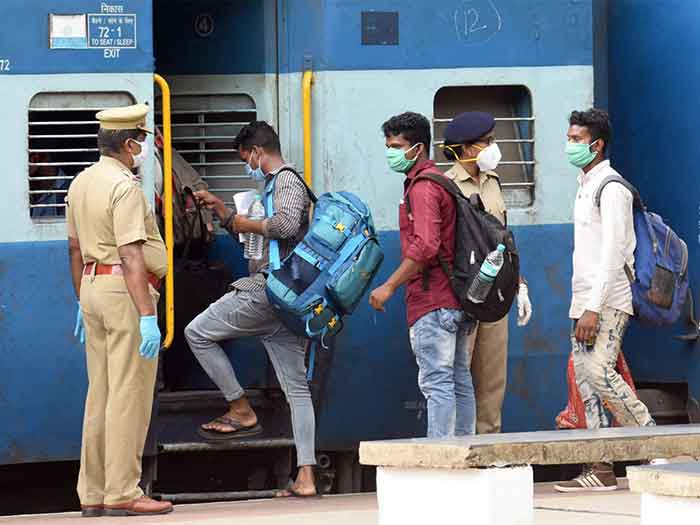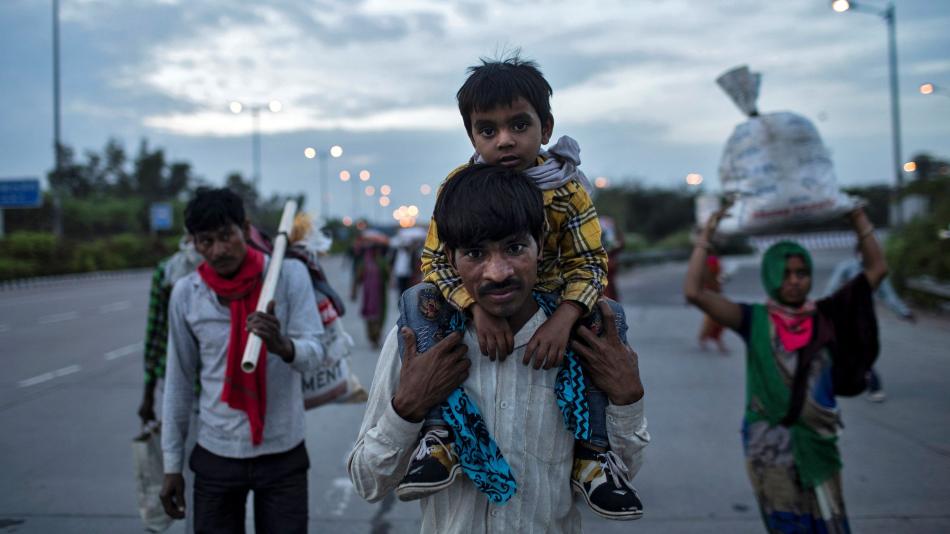
As we sat on the crowded Tagore beach in Karwar with outstretched legs, we are beseeched by the Kulfi sellers to have a Kulfi while watching a sunset. It is a difficult proposition to refuse. We give in and come to know that these Kulfi sellers on the beaches of Karwar riding on their cycles are all from the same town from north India. A non-niche survival idea and word of mouth spreads fast in towns and villages and drawing from close kinship networks many more come to the far south pursuing paltry income. This is not novel to Karwar. All cities small and big attract a fair amount of migrant labor. The reasons for migration maybe several including ones that means that one is able to find relief from the clutches of traditional structures back home. City becomes the site of freedom.
But more so than not and before we romanticize the idea of the city, it is important to understand that several others and in fact most of them see it as a survival strategy. The lack of rains and unproductive fields back home with several dependents to care and lack of state support means many must improvise on the act of living. During my fieldwork in Mangalore, every day and as early as six in the morning, people gathered at designated Labor Chowks seeking work through jobbers or contractors if you may. Jobbers then would enquire and pick several of them to the work sites offering daily or weekly and if lucky, monthly contracts. Most times all this was and is as fair as a game of lottery.
Several of this footloose labor cannot afford housing in the cities they have come to or it just becomes counterproductive to have one as they etch out a living and scramble to send money home. Several would only like to have a house of their own in their hometown or others want to send enough for private education for children and enough money to survive back home. What this means is that many of them either live in crowded houses along with other footloose workers or make do sleeping in public places. Profit can only be made through such self- sacrifice. Every day is a tryst with demand and the struggle is constant. So, when ‘stay at home’ call arrived, for several, there was no home to go back to. And that ‘home’ was several miles away.
And for many others housing is tied to employment. And when employment is lost, so is housing. Through the years, the labor’s share of income has declined while rents and real estate prices have shot up widening the economic disparities and the gap between the have and have nots making it difficult to live decent lives and not just have access to luxury. Such precarious existence for the labor is not uncommon. If speculative land prices, land development and increase in buying power of the middle class raise the value of land dispossessing the poor; with the rise of the gig economy and platform-based work and emphasis on the entrepreneurial work means aggregator services profit through technology while being absolved from any risk. As the scholar Wuyts notes, the capital now does not encounter labor as a risk-taking entrepreneur but encounters it as a rentier leaving the labor to manage risks in low and volatile productivity. Self- exploitation then is not uncommon. The city they have travelled to is not home but ‘worksite’- only a destination city for work. Several Security guards I spoke with in the city of Bangalore spoke of working two shifts. The self- exploitation for several is not a choice but becomes necessary to earn decent wages.
The landscape of labour is complex in India. While post 1990’s liberalisation saw a growth of casual sector; Post 2000’s has seen a rise in self-employment sector with over 50% of them who work identify themselves as self-employed. And before you think of them as capitalists, this large section is occupied by the disguised wage workers who are your chaiwallahs, homeworkers, cab drivers and so on. Several may be seasonal workers. And a large part of them depend on consumer demand for survival.
With the pandemic, heart wrenching images of suffering of the working poor has come to the fore. Many migrants struggled to get back to the safety of home which was in the source cities. There have been several deaths reported, tragic and avoidable losses of lives.
The pandemic has made visible what has been systemically invisibilised. Post 90’s liberalization and retreat of the state has already hollowed out our institutions with public goods like health and education increasingly privatized. Some of it owing to our own governments and others playing out as aid conditionalities. With not enough funds in public infrastructure and with private infrastructure incapable of handling the pandemic and the state having retreated since long, can we reverse what’s already lost. The virus screams into the inadequacies of a free market and decades long belief in the self-regulated market. What we need now more than ever is to collectivize and bring back the state to the center. What we also need is to safeguard worker interest.
Many scholars have wondered if the migrants will return at all. Reverse migration and the possibility of migrants returning to farm jobs means the hindering of the structural transformation from agriculture to industry for India. The growth story of India needs its migrants. And yet, calls to depress wages and dilute labor laws to accommodate for business losses expect the working poor to bear the burden of the crisis. Scholars have come forward to suggest that this is not backed by empirical evidence. Several others have called for an urban employment guarantee scheme. These are fair fixes but are not enough. Meanwhile, The new labour code does little to address the complexity of the migrant issues. The Swiggy workers have striked in Chennai for slashing task based fares of what was already paltry. What we need is more equitable systems and a fair deal for the working poor. We deserve to live in a world where every human can live decently, and no one is denied dignity.
Priyanka Krishna is a graduate from SOAS, University of London and works as a researcher in the field of education and development in India.
SIGN UP FOR COUNTERCURRENTS DAILY NEWSLETTER













































